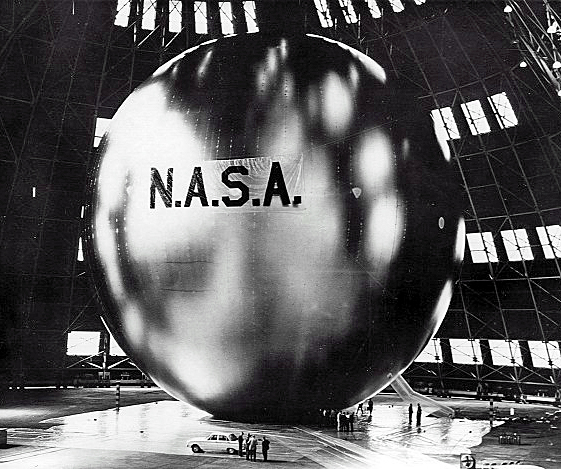
Sixty years ago this month, the United States successfully launched the Echo 1A passive communications satellite into Earth orbit. The 100-foot diameter balloon was among the largest objects ever to orbit the Earth.
A plethora of earth-orbiting communication satellites provide for a global connectivity that is commonplace today. Such was not always the case. Roll the clock back more than a half-century and we find that a global communications satellite system was just a concept. However, keen minds would soon go to work and provide mankind with yet another tangible space age benefit.
Communications satellites are basically of two types; passive and active. A passive communications satellite (PCS) simply reflects signals sent to it from a point on Earth to other points on the globe. An active communications satellite (ACS) can receive, store, modify and/or transmit Earth-based signals.
The earliest idea for a PCS involved the use of an orbiting spherical balloon. The balloon was fabricated from Mylar polyester having a thickness of a mere 0.5 mil. The uninflated balloon was packed tightly into a small volume and inserted into a payload canister preparatory to launch. Once in orbit, the balloon was released and then inflated to a diameter of 100 feet.
The system described above materialized in the late 1950′s as Project Echo. The Project Echo satellite was essentially a huge spherical reflector for transcontinental and intercontinental telephone, radio and television signals. The satellite was configured with several transmitters for tracking and telemetry purposes. Power was provided by an array of nickel-cadmium batteries that were charged via solar cells.
Echo 1 was launched from Cape Canaveral, Florida on Friday, 13 May 1960. However, the launch vehicle failed and Echo 1 never achieved orbit. Echo 1A (sometimes referred to as Echo 1) lifted-off from Cape Canaveral’s LC-17A at 0939 UTC on Friday, 12 August 1960. The Thor Delta launch vehicle successfully placed the 166-lb satellite into a 820-nm x 911-nm orbit.
An interesting characteristic of the Echo satellite was the large oscillation in the perigee of its orbit (485 nm to 811 nm) over several months. This was caused by the influences of solar radiation and variations in atmospheric density. While these factors are just part of the earth-orbital environment, their effects were much more noticeable for Echo due to the type’s large surface area-to-weight ratio.
Echo 1A orbited the Earth until it reentered the Earth’s atmosphere on Saturday, 25 May 1968. Echo 2 was a larger and improved version of Echo 1A. It measured 135-feet in diameter and weighed 547-lb. Echo 2 orbited the Earth between January of 1964 and June of 1969. Other than the Moon, both satellites were the brightest objects observable in the night sky due to their high reflectivity.
The Echo satellites served their function admirably. For a time, they were quite a novelty. However, progress on the ACS scene quickly relegated the PCS to obsolescence. Today, virtually all communication satellites are of the ACS variety.

